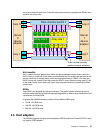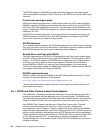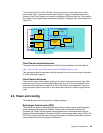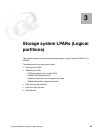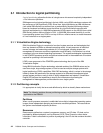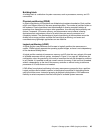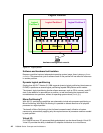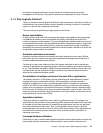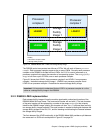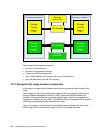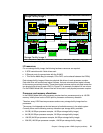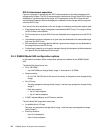Chapter 3. Storage system LPARs (Logical partitions) 45
Building block
A building block is a collection of system resources, such as processors, memory, and I/O
connections.
Physical partitioning (PPAR)
In physical partitioning, the partitions are divided along hardware boundaries. Each partition
might run a different version of the same operating system. The number of partitions relies on
the hardware. Physical partitions have the advantage of allowing complete isolation of
operations from operations running on other processors, thus ensuring their availability and
uptime. Processors, I/O boards, memory, and interconnects are not shared, allowing
applications that are business-critical or for which there are security concerns to be
completely isolated. The disadvantage of physical partitioning is that machines cannot be
divided into as many partitions as those that use logical partitioning, and users can't
consolidate many lightweight applications on one machine.
Logical partitioning (LPAR)
A logical partition uses hardware and firmware to logically partition the resources on a
system. LPARs logically separate the operating system images, so there is not a dependency
on the hardware building blocks.
A logical partition consists of processors, memory, and I/O slots that are a subset of the pool
of available resources within a system, as shown in Figure 3-1 on page 46. While there are
configuration rules, the granularity of the units of resources that can be allocated to partitions
is very flexible. It is possible to add just a small amount of memory, if that is all that is needed,
without a dependency on the size of the memory controller or without having to add more
processors or I/O slots that are not needed.
LPAR differs from physical partitioning in the way resources are grouped to form a partition.
Logical partitions do not need to conform to the physical boundaries of the building blocks
used to build the server. Instead of grouping by physical building blocks, LPAR adds more
flexibility to select components from the entire pool of available system resources.



